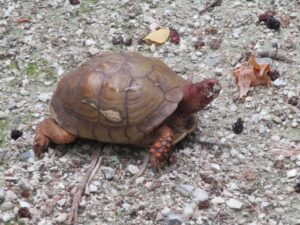
One of the advantages of moving through the world on a bicycle is being able to interact with people that you pass, eye to eye, in a human way that is just about impossible when traveling in a fast moving infernal combustion contraption. Most people that commute to work or school by bicycle know this already.
Because you are interacting with people directly, and not from within a big steel cocoon, encounters are usually polite and pleasant. The impatient honks and occasional curses out the window between motor vehicle operators are almost unheard of between cyclists and between cyclists and pedestrians. The automobile strips us our sensitivity and creates an expanded sense of personal space. It turns the nicest people into monsters. Watch what happens to mild-mannered Goofy.
When bike touring, one has the delight of meeting all of the other cyclists that are going from coast to coast or perhaps just riding a big loop around the region where they live. I’ve met people from all over the world. When we meet and talk, we trade where we are from, where we started and plan to end our trip, and often details about things to enjoy or avoid down the road.
On this trip, I have also discovered that being on a bicycle creates opportunities for more direct communication with the animal kingdom. One thing I noticed early on was that when passing pastures, cows stop grazing and look up at you. They never seem to do that when you are going by in a car. Perhaps to a cow, a car is just another animal, a strange and noisy one, that happens not to be a predator. So, why bother looking up. When I pass by on my bike, they know I am a human, perhaps up to no good. Is this guy going to put another tag in my ear?
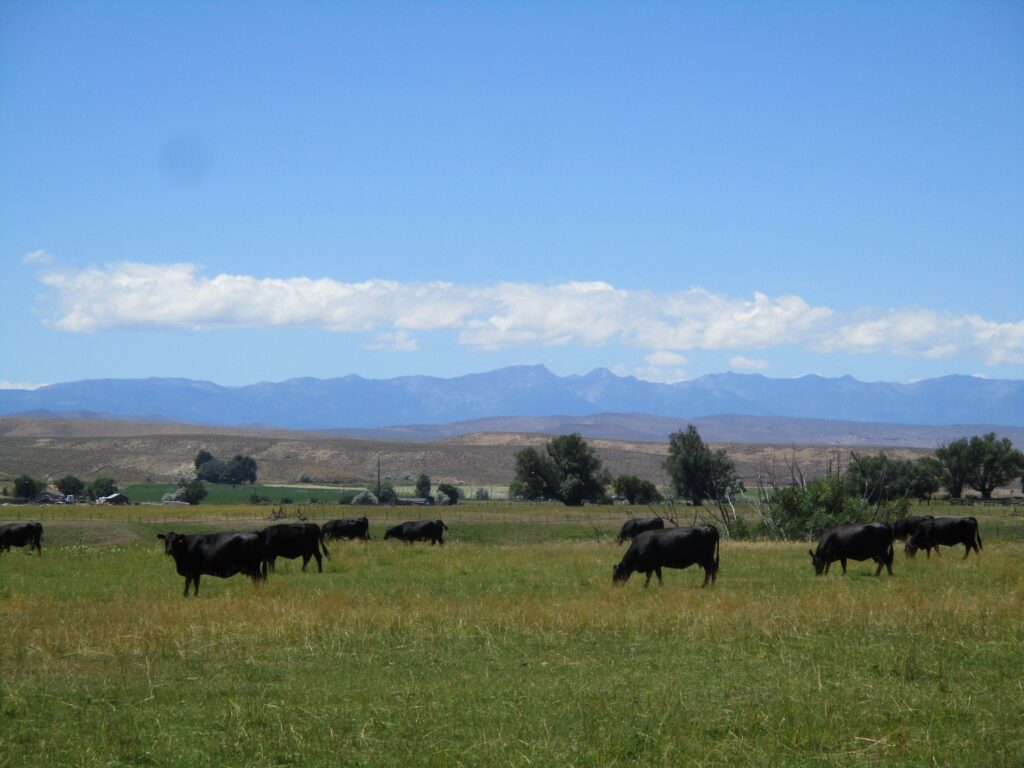
Domesticated horses react a little differently. Sometimes they can be indifferent to your presence but often they are quite friendly. If I stop, they will often come right up to the fence. They seem ready to make friends with any human that happens to pass by. It seems like this would make them really easy to steal, unlike dogs. Dogs are often not immediately friendly to strangers. They may bark, growl, wake up their owner and even bite. If you are going to steal someone’s domestic animals, horses are way easier, I’m guessing.
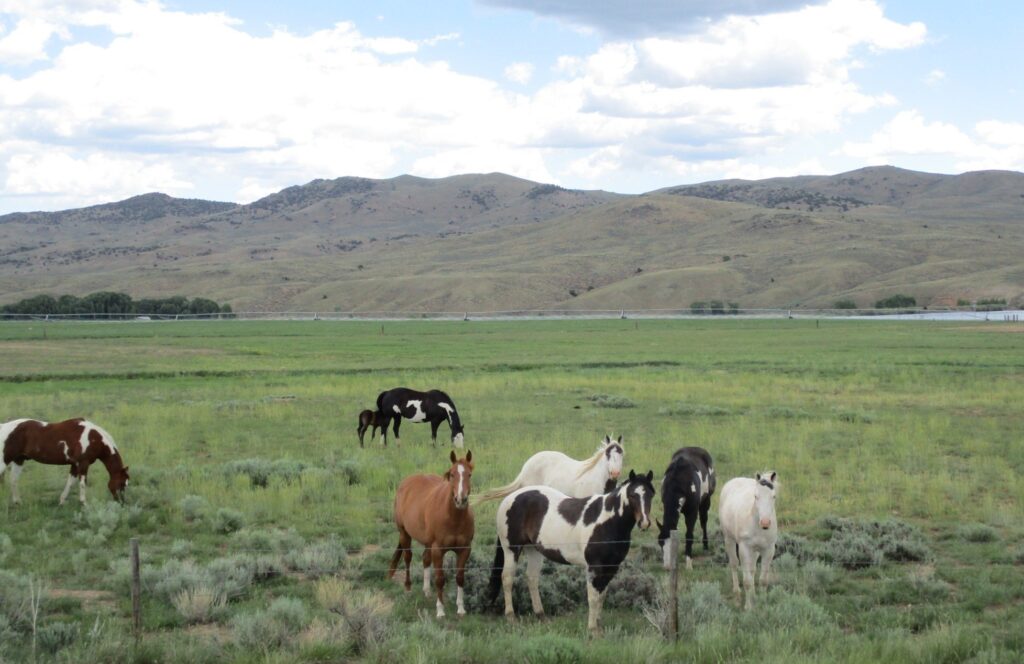
In fact, dogs are the animals with which a cyclist wants to interact the least. If one comes running on the road barking and snarling I’ve learned that it is better to just stop my bike. To keep riding is to invite a chase. Most of the time the dog will become confused when you stop and maybe even take off running in the other direction. If the dog is still aggressive, your bike can make a good shield until the owner comes to call it off. Some people carry pepper spray for the case in which the owner never shows up. I don’t.
I didn’t ride through Kentucky but at least a few cyclists have told me that there are a lot of mean dogs that go after cyclists there. I’ve been thinking of writing a song about it:
The feedlots of Kansas can smell really yucky,
And the winds of Wyoming can get awfully sucky
But nothin’s as bad as the Dogs of Kentucky!
Dogs, dogs, dogs, dogs, of Kentucky
I am very certain that I spotted a wolf in the Beaverhead-Deer Lodge National Forest, south of Missoula about 100 miles. It was around 8 AM. I was riding up toward Chief Joseph Pass. Suddenly, only 50 yards ahead on my right, a large canine stepped out from behind the trees. When it saw me, it took off back into the woods. It was way too big to be a coyote and if it were a dog, it would have chased me.
The most surprising animal interactions I have had are those with birds. Almost all of these encounters have something to do with parents—usually males—protecting their offspring or territory.
When I was riding along Lake Erie in New York, most of the Canada Geese were in the process of hatching and raising chicks. Usually, as I approached the parents and their brood as I rode down the old towpath, the family would jump into the water for safety. But every now and then, I would notice that the ganders were not running but standing their ground. As I passed one family, I decided to take a photo. I stopped my bike a few feet away. To my surprise, the male went into velociraptor mode. He started hissing and taking steps toward me. To avoid being goosed, I abandoned the photo idea and moved on down the line. After that, I gave the geese lots of room and pedaled a little faster as I went by them.
There are two bird species that have inhabited the roadside just about my whole trip: red wing blackbirds and killdeers. They are the official mascots for my tour.
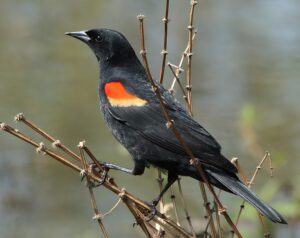
The red wing blackbird seems to have so many different vocalizations, I wonder if it could be taught to talk. One of its calls has the tone of someone making a matter of fact statement about something. They might be saying something like, “The mosquitos are so bad this time of year” with the last note falling off in resignation. Despite that, the song is beautiful and melodic.
And the killdeers sound comical, with a sort of “cuckoo for cocoa puffs” rhythm to their call only with a higher pitch.
As with the Canada Geese, red wing blackbirds’ reaction to me is feisty and aggressive. I was well into the trip before I realized why I kept hearing them but could never see them. One day I finally looked straight up overhead to see three of them above me chirping as if to say “Git outta town by sundown. We don’t take ta yer kind in these parts! Now, git, git, git!”
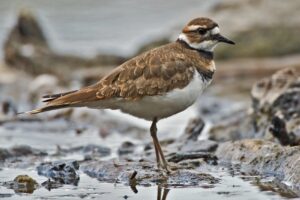
Usually, the killdeers are timid. They scoot as soon as they see you but on one afternoon there was one that stood its ground. It kept jumping ahead and calling at me for about an eighth of a mile before it felt sure that I was far enough away not to be considered a threat.
This week had a bird encounter that really surprised me. I was in Eastern Oregon, just a little bit west of Richland. I pulled my bike over for a quick rest stop under some trees. I could here raptor calls overhead. When I looked up, there were two of them. I believe they were a pair of northern harriers. I decided to take some video of them flying above me. As you can see in the video, the male was not ready to have his picture taken. After he swooped down to take a swipe at me, I decided it might be better if I got back on the road.
I have seen deer and antelope playing out on the range but most of the time they make themselves scarce when they see you. Near towns and cities, where they seem to know that hunting is illegal, the can be absolutely nonchalant about your presence.
Yellowstone is a place where there is potential for having encounters with bears. It was so packed when I rode through, I think the bears, along with every other kind of animal, might have been taking refuge in the deep woods.
The other members of the animal kingdom that you encounter on a bike are various types of insects and other arthropods. Mosquitos are there to greet you in many parts of the country. In Kansas, I came across some little black biting flies that hurt like hell. And, I’ve been stung on the legs by bees a couple of times. I also removed one tick from of my ankle.
There are butterflies too though. Like birds, they are difficult to photograph without having the right equipment. I didn’t bother to keep track of the many different species I saw along the way. It must be lots.
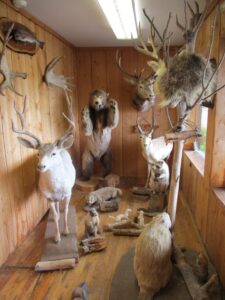
A sad thing is that a lot of the animals I encounter on the road are dead. As I mentioned in a previous post, animals are just one more casualty of our love of the automobile. I’ve seen a variety of mammals, birds, reptiles, and amphibians in various stages of decay on side of the road. Many times the poor creatures are so mangled, I can’t tell what they are. In Missouri, there were so many dead armadillos that the turkey vultures could not keep up. There were even a lot of dead vultures.
Most cultures have a lot of ceremony around the taking of an animal’s life. Car culture unceremoniously mows down millions of animals a year. It is symbolic of its carelessness and lack of care about anything. It seems too insensitive to understand or realize the costs and consequences of its existence. As the globe heats up and the mass extinction continues, people in the US happily motor on with no concern.
[This was posted from Dayville, OR at trip mile post 4301.]